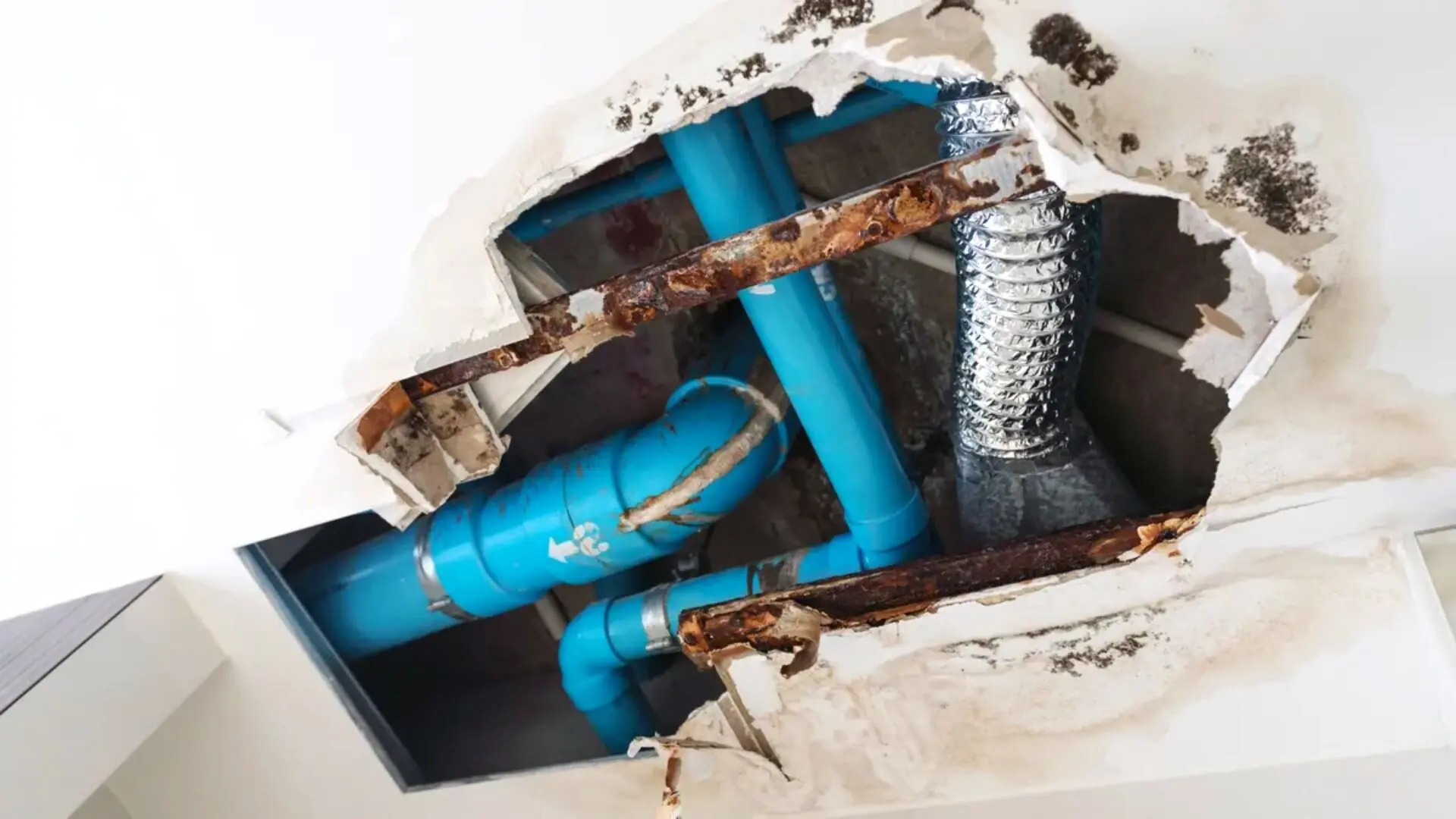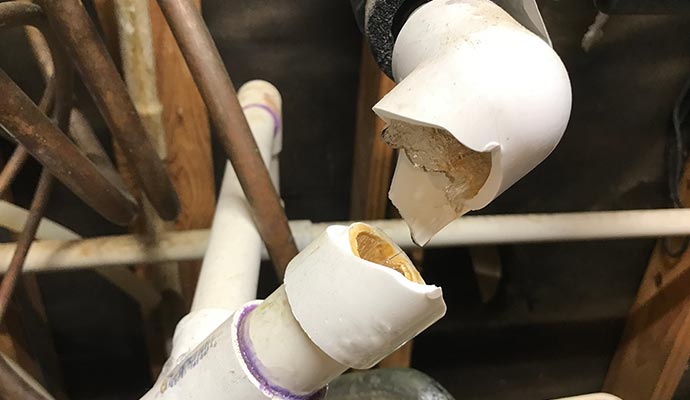How to Fix a Burst Pipe Yourself: A Step-by-Step Guide for Homeowners
How to Fix a Burst Pipe Yourself: A Step-by-Step Guide for Homeowners
Blog Article
Stopping Ruptured Pipes: Important Tips to Safeguard Your Plumbing
Stopping ruptured pipes is an essential issue for home owners, particularly throughout chillier months when the threat of cold is increased. Executing calculated procedures such as proper insulation, regular examinations, and keeping consistent indoor temperatures can dramatically decrease the possibility of pipeline failing.
Understand Pipe Vulnerabilities
Understanding pipe susceptabilities is crucial for efficient plumbing maintenance and preventing pricey damages. A number of aspects add to the sensitivity of pipelines to ruptureds, including material composition, age, and ecological conditions. Older pipes, specifically those made from galvanized steel or polybutylene, typically weaken in time, causing raised risk of tears and leaks.
Temperature level fluctuations can additionally considerably influence pipeline honesty. In colder climates, water entraped in pipelines can freeze, putting in and broadening stress on the pipe walls, which might inevitably cause a burst. Additionally, high water pressure can stress pipelines, especially at joints and bends, heightening the likelihood of failure.

Insulate Piping Properly
Appropriate insulation of pipelines is crucial for avoiding cold and succeeding ruptureds throughout cold weather (burst pipe). Protecting your plumbing system successfully safeguards versus temperature level goes down that can cause costly damage. Begin by determining prone locations where pipelines are revealed to exterior temperature levels, such as cellars, attic rooms, and outside wall surfaces
Usage foam pipeline insulation sleeves or cover insulation tape around these locations to give a safety obstacle. Make sure that all areas of the pipelines, especially those with restricted warm exposure, receive sufficient insulation. Pay special attention to installations and joints, as these are much more susceptible to freezing.
When insulating, it's necessary to select products that fulfill neighborhood building regulations and are proper for the certain setting. Fiberglass insulation is frequently recommended for its thermal resistance properties. In addition, take into consideration utilizing heat wires or tape in severe conditions, which can be connected in to supply additional heat
Consistently check insulated pipelines for any indicators of wear or damage, as compromised insulation can lessen its efficiency. By taking these aggressive procedures, you considerably reduce the danger of pipe bursts, ensuring a trusted plumbing system throughout the winter season.
Maintain Constant Temperature Level
A secure interior temperature level is essential for avoiding burst pipes throughout the frigid months. When temperatures decrease, water within pipelines can freeze, developing and expanding pressure that might inevitably trigger the pipelines to burst. To reduce this danger, house owners must preserve a constant temperature throughout their home, ideally no less than 55 ° F(13 ° C)Making use of a programmable thermostat can aid handle indoor temperatures effectively, making certain that rooms with pipes stay warm even when the residence is empty. Pay special attention to locations that are a lot more prone to cold, such as garages, attics, and cellars. Maintaining cabinet doors open under sinks can additionally enable warmer air from the home to circulate around pipes.
Furthermore, it is prudent to permit faucets to leak a little during severe cool spells. This minor circulation of water can prevent freezing by relieving pressure within the pipelines. Throughout particularly severe weather condition occasions, take into consideration temporarily suspending any type of nighttime obstacles on your thermostat to keep a steady warm setting. By executing these strategies, property owners can substantially lower the threat of pipeline ruptureds and guard their pipes systems versus the rough winter months components.
On A Regular Basis Examine Pipes
Routine inspections of pipes systems are important for preventing ruptured pipes and preserving total home integrity. Regular checks allow home owners to determine possible problems before they escalate into pricey repair services or major water damage. Throughout these evaluations, it is important to take a look at visible pipelines for indicators of rust, leakages, or wear. Pay unique you could try here focus to locations susceptible to freezing, such as basements, attics, and outside walls.
In addition, evaluating joints and links is important, as these factors are frequently at risk to leakages. House owners should additionally examine water stress levels, as excessive stress can stress the plumbing system and boost the risk of pipeline bursts.
Take into consideration organizing specialist plumbing evaluations at least when a year, particularly before wintertime, to guarantee your system is prepared for chillier temperatures. By being aggressive in your method, you can protect your home against the pricey and disruptive consequences of ruptured pipelines.
Know Emergency Situation Treatments
Understanding emergency situation treatments is vital for every home owner, particularly after performing routine pipes evaluations. Being planned for a plumbing emergency can dramatically minimize damage and save costs. Initially, situate your primary water shut-off shutoff; it is typically discovered near the water meter or where the main line enters your home. Familiarize yourself with its procedure, as turning off the supply of water promptly can avoid considerable flooding.
Following, keep crucial tools useful. A pipes emergency situation set should consist of a wrench, plunger, and towels, in addition to a flashlight and a container for tiny leakages. In addition, think about having the contact info for a relied on plumbing professional easily available, needs to the scenario escalate beyond your control.
If you find a leakage or ruptured pipe, promptly transform off the water system and notify your plumbing professional. Document the damage with photographs for insurance policy purposes. Understand the indicators of potential pipes problems, such as unusual water stress fluctuations or damp areas on wall surfaces
Inevitably, proactive knowledge and swift action are essential in taking care of plumbing emergencies, guaranteeing your home stays secured and lessening prospective damage.

Conclusion
Finally, avoiding burst pipes necessitates a multifaceted approach that consists of understanding pipe vulnerabilities, advice appropriate insulation, maintaining consistent interior temperature levels, normal evaluations, and knowledge of emergency procedures. By executing these vital techniques, the risk of plumbing failures can be considerably minimized, thereby ensuring the durability and performance of the pipes system. Proactive steps not just protect against possible damage yet also add to total water preservation and the security of home.
In chillier environments, water trapped in pipelines can freeze, exerting and expanding pressure on the pipeline wall surfaces, which may inevitably lead to a burst. When temperature levels decline, water within pipes can ice up, creating and increasing pressure that might ultimately cause the pipelines to ruptured. By implementing these techniques, home owners can significantly decrease the danger of pipeline bursts and protect their plumbing systems versus the harsh winter season aspects.

Report this page